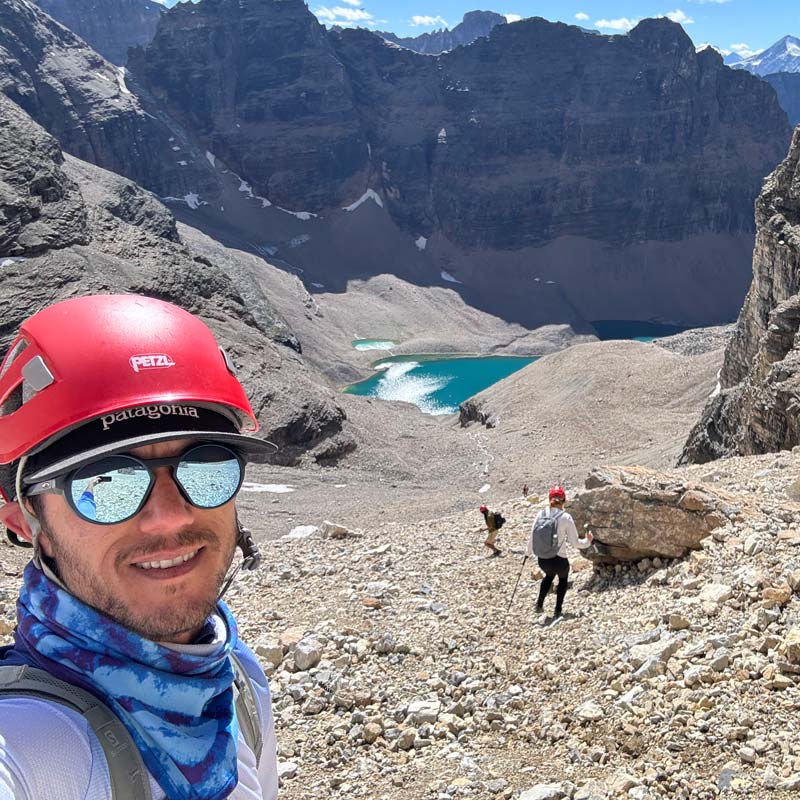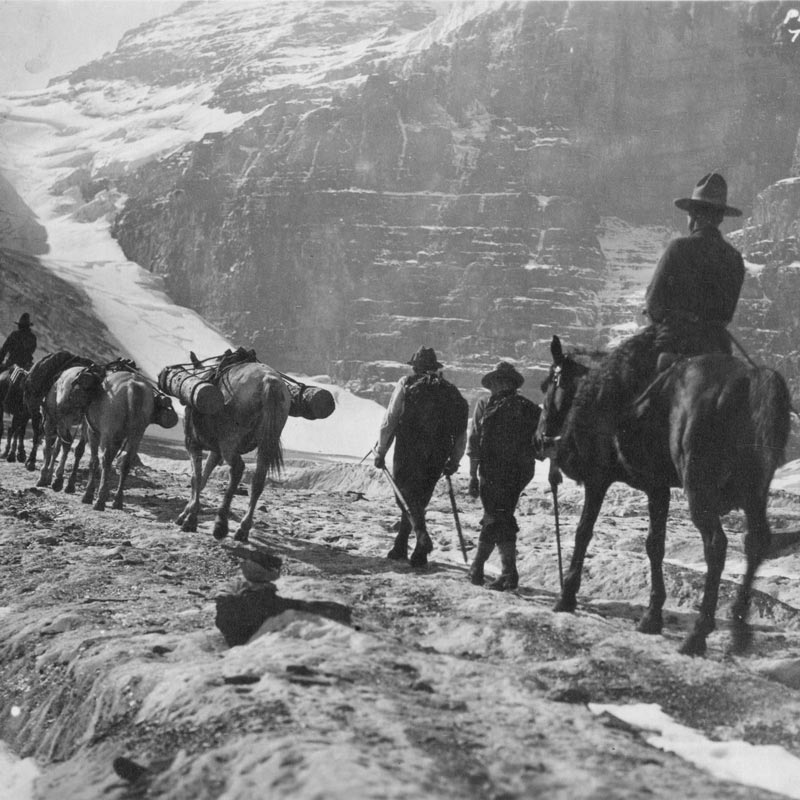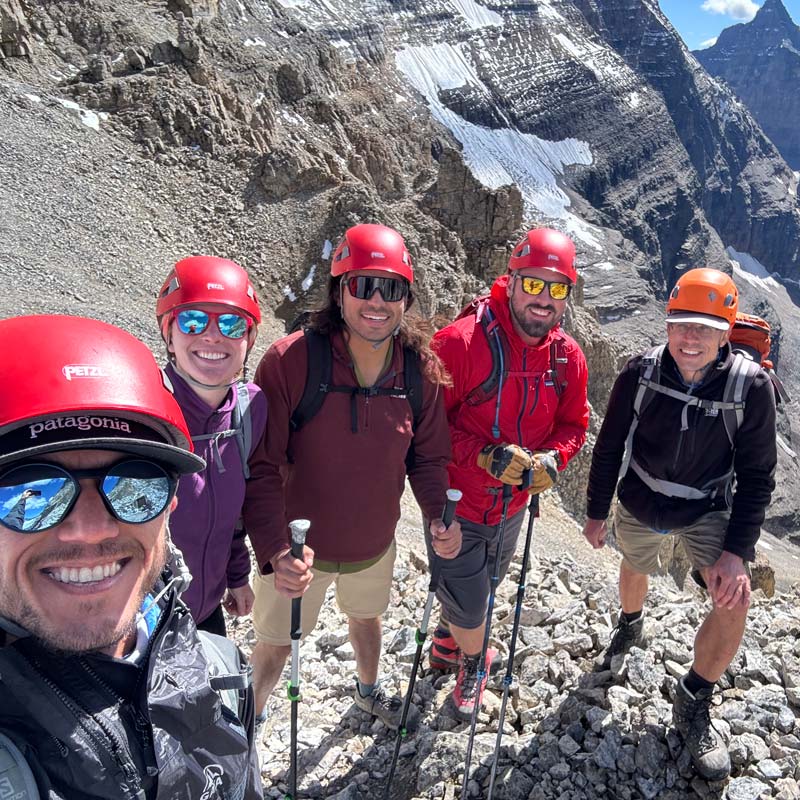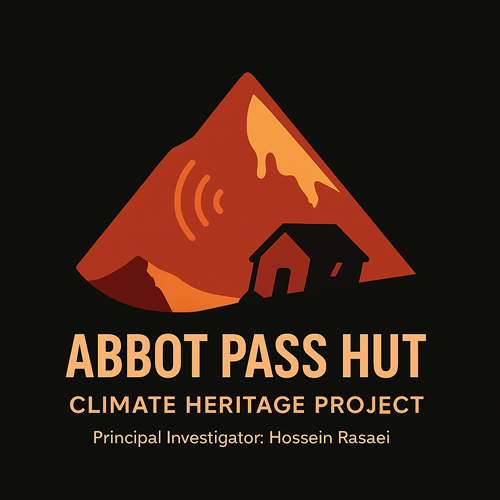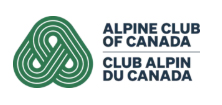Transforming the absence of a storied hut into a living laboratory for climate communication
PROJECT TITLE
Abbot Pass – Climate Heritage Project
NAME OF ORGANISATION
Hossein Rasaei (individual)
Snapshot
The Abbot Pass Climate Heritage Project envisions a mountain sport community in which climate awareness, heritage preservation, and narrative based stewardship are inseparable from the joy of being in high places. Through photographs, published accounts, and oral histories, the project turns the loss of Canada’s Abbot Pass Hut into a living story that equips climbers, hikers, and guides to act as informed guardians of fragile alpine ecosystems and cultures.
View of MPA Assessor
What struck as unique is adding the concept of an additional layer to the fight for environmental sustainability and against climate change, namely the introducing of storytelling. It’s been used and created the greatness of alpinism and expeditions over centuries, but to connect it to sustainability and climate change, as is the case for the Climate Heritage Project is truly inspiring.
Project Objectives and Vision
Listen to an exclusive interview about the loss of the Abbot Pass Hut on the UIAA podcast Mountain Voices.
The Abbot Pass Climate Heritage Project advances climate action and environmental sustainability by translating the abstract science of warming trends into lived, shareable narratives that alter behaviour, shape tourism, and inform policy. Anchored in environmental humanities and social science inquiry, the study assembles three complementary evidence streams:
- Visual memory (22 photographs): A curated sequence documents the hut’s construction by Swiss guides, its mid-century “golden age” of guided ascents, and its progressive destabilisation and removal as permafrost thaw advanced.
- Alpine discourse (20 years of Canadian Alpine Journal prose): Comparative content analysis reveals a lexical migration from conquest oriented rhetoric (“step cutting,” “first ascent”) to climate inflected terms (“heat dome,” “permafrost void”).
- Community voice (16 semi structured interviews): Participants range from Girls on Ice youth climbers to an octogenarian Swiss Canadian guide, producing rich testimony on five emergent themes: environmental observation; climate impacts on mountain tourism and recreation; adaptive shifts in climbing technique and risk perception; loss of mountain heritage (huts, glaciers, traditional routes); and changes in emotion, place attachment, and stewardship activism.
Starting in 2023, the initiative continues to strive for the following goals:
- Preserve Mountain Legacy: Create a permanent, freely accessible digital archive that weaves 22 curated photographs, guestbook excerpts, and route lore into an annotated timeline of the hut’s 100-year lifecycle, ensuring that its cultural significance endures beyond the physical site.
- Elevate Narrative Driven Climate Communication: Distil study insights into compelling stories – slide decks, podcast scripts, social media micro essays – that outdoor educators, guide services, and film festivals can deploy to make climate change tangible and relatable.
- Empower Stewardship and Activism: Grow the “Storytelling for Stewardship” workshop series so that, by 2027, at least 400 climbers, guides, and youth leaders can translate personal mountain experiences into climate action messaging and community initiatives.
- Support Sustainable Mountain Tourism: Provide park agencies, outfitters, and community planners with evidence based recommendations – shoulder season programming, low carbon access incentives, heritage focused tours – that align visitor use with ecological capacity while honouring local history.
- Foster Emotional Resilience: Highlight the trajectory from grief to guardianship documented in interviews, offering climbers language and practices for coping with environmental loss and transforming anxiety into constructive engagement.
In a next step, and moving toward 2027, the project aims to register a DOI digital archive integrating visual, textual and oral sources and make it accessible to scholars and the public. It will further produce a narrative toolkit, hold storytelling workshops across Alpine Club of Canada sections and university outdoor recreation programmes, produce a policy brief to be adopted by Parks Canada that outlines low carbon interpretive strategies and heritage preservation guidelines for thaw vulnerable sites and finally, hold a cross-sector symposium uniting climbers, heritage practitioners and tourism operators to share best practices in climate communication and mountain legacy protection.
In summary, the project transforms the absence of a storied hut into a living laboratory for responsible climbing, sustainable tourism, and climate communication, demonstrating how social science approaches can enrich safety, culture and stewardship across the spectrum of mountain sports.
Contact Details, Discover More & Support
UIAA Mountain Protection Award Nominees

